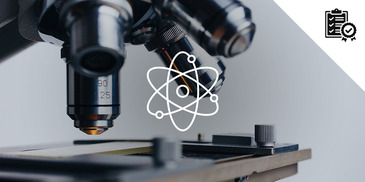
Learn about Germany's controversial decision to end its nuclear energy program. [4:45]
- Subject:
- Mathematics
- Science
- Material Type:
- Audio/Video
- Provider:
- PBS LearningMedia
- Date Added:
- 11/06/2023


Learn about Germany's controversial decision to end its nuclear energy program. [4:45]

This ZOOMSci video segment teaches you how to germinate seeds in a plastic bag and helps you understand some of the factors that influence the germination process. [2:19]

Learn how scientists regulate a nuclear reactor in this animation-enhanced essay from the FRONTLINE Web site.

How do simple machines and gears help devices work? In this challenge, learners will explore how gears are used in machines and mechanisms. Gears are closely related to simple machines and provide a mechanical advantage in machines. Devices worldwide contain gears and are components critical in mechanical engineering design.
This is a 3-hour lesson that includes a self-paced interactive module and classroom activities. The teacher guide includes a challenge sequence (timeline), relevance to standards, materials list, assessment, evaluation rubric, and learning extensions.
Lesson objectives: (1) Explore the connection between gears and simple machines. (2) Differentiate how different gears do work, transfer power, speed and direction. (3) Design, build and demonstrate a simple model of a gear train.

This video segment from Outdoor Nevada looks at the Gila monster's behavior, habitat, and unique adaptive characteristics. [3:55]

Featuring images of glacier formations, this interactive resource adapted from the National Park Service explains what glaciers are, where they are found, how they form, and how they move.

From the Glenn Research Center at NASA, read about the law of conservation of energy. Included are formulas and many links to key terms.

In this webcast, Dr. Brian Huber, paleontologist, explains why tiny organisms called foraminifera are great indicators of changes in global environmental conditions. [29:16]

Students study past climate change, explore the effect of greenhouse gases on Earth's atmosphere today, and consider human impact on global warming.

The volcano Krakatau is in Indonesia. Learn about its background information, description, frequently asked questions, items of interest and useful links.

The Smithsonian Institute presents a searchable database on volcanoes of the world. Search by region, volcano name, or eruption date. There is also a chronological list of large eruptions during the last 10,000 years.

This video segment adapted from NOVA/FRONTLINE demonstrates the physical property of carbon dioxide that causes the greenhouse effect. Includes background reading and discussion questions. [2:26]

Thanks to technology, the world is changing faster than ever before. Unfortunately, many of these changes are probably having a negative impact on the global climate. This video segment adapted from NOVA/FRONTLINE takes a look at what the future might hold for the environment as a result of the expanding use of technology. [1:53]

This video segment adapted from NOVA/FRONTLINE examines the greenhouse effect, its role in keeping Earth habitable, and the industrial changes that have led to an increase in the planet's average temperature. Includes background reading and discussion questions. [2:15]

By testing your local water quality, you will be able to compare your results with students around the world. Register your class, and follow the project instructions. Additional teacher resources, references, and Ask-an-Expert sources are availible

Where does the sun go at night? Come along with PEEP as he sets out to find this answer. Along the way, learn some interesting facts about the sun and shadows. Extensive teaching tips and additional activities are also included. [8:50]

Watch this professional development video to help prepare lessons so that students can understand about gravity, inertia. and air resistance. [9:51]

Do you have trouble getting past students' misconception about energy? This video will address ways you can teach energy in your classroom. [7:14]

This video addresses the topic of natural selection and misconceptions students may have that would lead to them not understanding the topic of evolution. [10:07]

This video segment adapted from NOVA features the twisted and melted forms of the Grand Canyon's oldest rocks, the 1.7-billion-year-old Vishnu Schist.